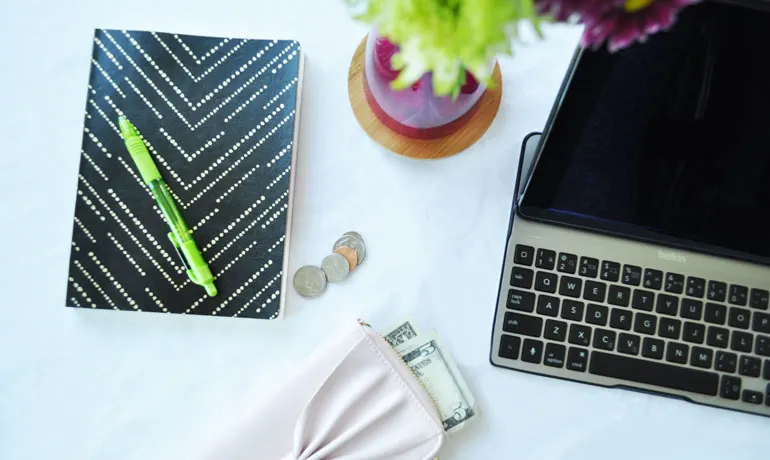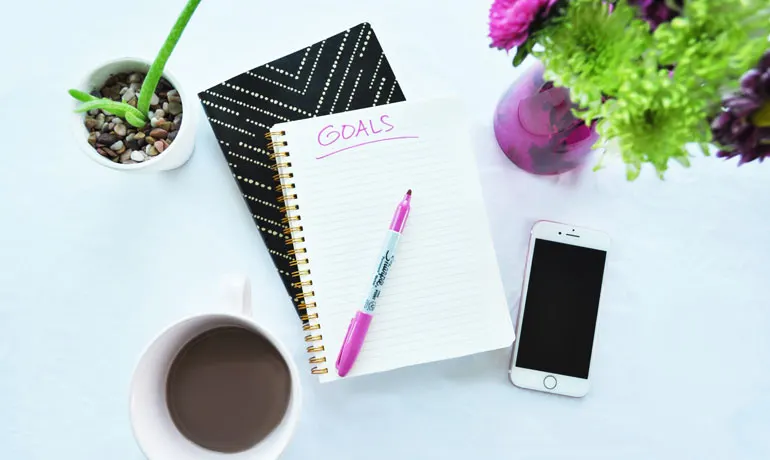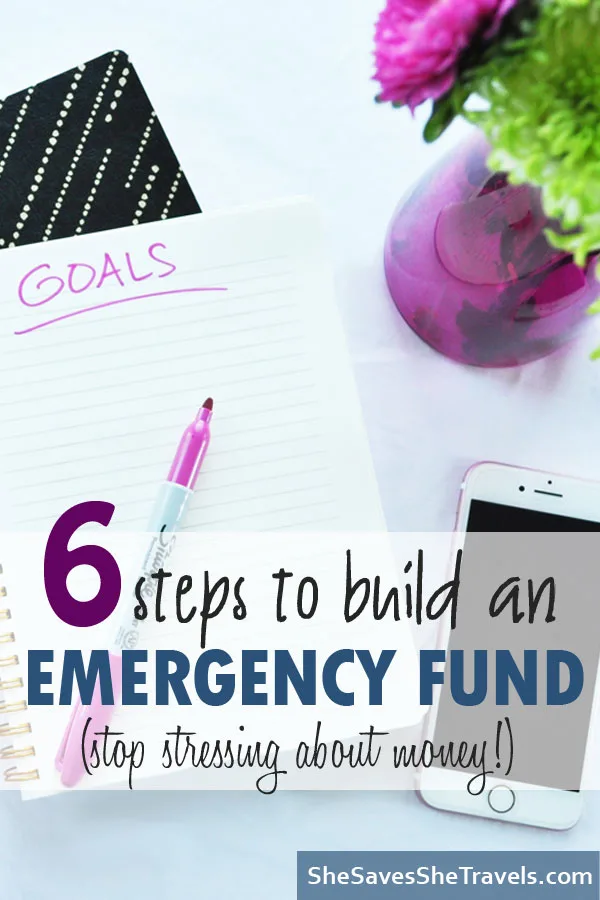How much money do you need for your emergency fund? How do you build an emergency fund? If you’re thinking you need to establish some savings for emergency situations, these are great questions to consider.

This post may contain affiliate links. For more info, see my disclosures.
But there’s one more thing to consider: DEBT. It’s so important that you have an emergency fund even while you’re paying down your debt. Creating this safety net for yourself will prevent more debt from finding you, because you’ll have a way to pay for your unexpected situations as they arise.
If you haven’t read the first article in this series, 10 Reasons Why You Need an Emergency Fund, hop on over there to read up on the basics of an emergency fund. Then before we dive into how to actually build an emergency fund, it’s important to remember that your emergency fund is a separate account from your regular savings. So if you’re saving money for an amazing island vacation, the latest Apple Watch or a new home, an emergency fund is different savings than that. You may want to spend your emergency fund on a new luxury purse, but keeping your money separate will help you avoid the temptation to spend it.
6 Steps to Build an Emergency Fund
1. Open up a separate savings account for your emergency fund
This is huge! You need to establish a bank account that’s completely separate from your regular savings or checking account at your bank or credit union. You’ll want to be able to put money into your account, but not easily transfer or spend money from that account. Having it at a separate financial institution is also helpful. Just make sure to do your research and find an account with no fees!
2: Determine how much you need
How much you need in your emergency fund completely depends on your situation and comfort level. If you have a lot of debt, it may make sense to concentrate on paying off your debt, and only build an emergency fund to a lower amount. In this case, you could start with a minimum of $1,000. Why is $1,000 the starting point? Well, $1,000 would likely pay for a car insurance deductible, an unexpected medical bill or a flight across the country to say your final goodbye to a loved one.
However, depending on your situation, $1000 may not be enough. Like if your house suffered severe storm damage, would one deductible wipe out your emergency fund? In that case, find an amount that you’re comfortable with.
Most financial experts say you’ll need anything from 3 to 6 or even 9 months worth of monthly expenses in your emergency fund. You might be thinking that’s a lot, and it really is! But if you’ve read the reasons why you need an emergency fund, a major reason is job loss. You’ll want to cover yourself if a big life event like that happens.
So the bottom line here is that your amount in your emergency fund is up to you. You want to be comfortable in an emergency. But if you have large debt payments every month, you typically want to put any extra money toward those before you build an emergency fund to a large amount.

3: Track your current spending
Do you know how much money you bring home, and how much you’re spending every month? If you don’t, friend, it’s time to pay attention because this is the number one rule to setting yourself up for financial success. In order to understand how you’re going to build an emergency fund, you need to track your spending.
Here are my favorite tools for tracking spending:
- You Need a Budget (YNAB). This phone app and website links to all your bank, credit cards and investment accounts. I particularly love how the tool allows you to categorize your savings buckets without having to actually move money from account to account. I also like the ‘age of money’ feature that tells you how well you’re doing at saving. This tool is $6.99/month (you can get a 34 day free trial), but if you really want to manage your finances in detail, this is an excellent tool.
- Mint.com. This is a free tool, and also links to your banks and various other financial accounts. It provides spending trends for your finances so you can visually see where you’re spending your money. It even suggests areas to improve. The downside of this free tool is that it has ads. Mint and it’s partners will recommend more banking and financial products to you, which can be annoying. The features also aren’t quite as robust as YNAB.
- Your bank or credit union might also have a personal financial management tool that has similar features as the tools above. Since most people have more than one bank account and credit card, you’ll just want to make sure it can link to the others for a full financial picture.
- The cash envelope system. It’s more work to pay with cash, but having the physical bills in your hand keeps you accountable for your actions. If you’re going to take saving money seriously, this is a great way to go.
- Just a simple excel spreadsheet. My husband and I used this method for many years! This gives you the availability to make your finances as simple or elaborate as you want. Pinterest has a bunch of free templates for this kind of thing, too.
4: Pay yourself first
Yep, seriously the easiest way to save! Because, guess what, you won’t notice that you don’t have it to spend, especially if you start small.
You can ask your employer to automatically deposit money into your separate emergency fund account. Depending on your financial situation, you might need to start small. Even $25 per paycheck will add up over time! Put away as much as you can comfortably each paycheck. As you get better at saving increase the amount.
Since you’re already automating your savings, trick yourself to save even more. Download apps like Digit and Qapital that automatically help you save by recognizing patterns in your spending and making the transfers to savings automatically for you.
5: Identify gaps in spending that could be used for savings
Alright, so you’re already tracking your spending and automatically saving what and when you can. Next thing is to identify – or create – a gap between what’s coming in every month and what’s going out. This gap is your new savings to build an emergency fund.
So right now are you thinking, but how? Well if money is tight you’ll need to create that gap. Start identifying ways to save more money. Here are 55 ways to save money that will get you started. But ultimately it’s all about asking yourself the hard questions:
- What can I sacrifice now that will create a better financial position in the future?
- What can I sell today to help create the savings buffer that I desire?
- Would I rather have this (insert item you’re about to purchase), or the freedom of paying for an emergency with my fully funded account?
- What are my financial goals, and how do my spending habits affect those goals?
Easiest Way to Spend Less Money (Value-based Spending) – She Saves She Travels
A simple rule to spend less money and save more money. Take the values test to seriously change your finances! Try value-based spending, like right now.
6: Celebrate wins
It might seem strange to include this as a step to build an emergency fund. But it’s equally as important as the others! The reason I include it as a step, is because you need something to look forward to, something to celebrate. Every bit of savings you put in your emergency fund gets you closer to building a safety net for the next unexpected event.
So, if your goal is $1,000 in your emergency fund and you’re starting at $0, celebrate every time you add $100. Not by spending a bunch of money, that would counteract your progress! But by having a dance party in your kitchen, a victory scream with your kids in the living room, or by taking yourself out for ice cream. Every milestone on your journey to build an emergency fund is a big deal. And celebrating each of them only creates more momentum to tackle the next.
What to do if you have to pull money out of your emergency fund
First, let me start off by saying it had better be an emergency! It’s really tempting to use your emergency fund for something other than an emergency. But a new TV, buying a birthday gift for your spouse or a trip to the Bahamas is not an emergency.
When a true emergency arises, it can be disheartening to have to pull money out when you’ve been working so hard to save it. But if you do have to take money out, that’s okay. That’s exactly why you’re saving money. So just like you worked to build it the first time, you’ll need to work to build it again.
Ultimately, saving money can be hard work. But you know what? It will be worth it. You can do this!
Find this article helpful? Save it for later or share it on social media!


Nikki
Monday 12th of November 2018
This was great! I can always use advice on money saving. Now can you teach my husband???
Nikki
Tuesday 13th of November 2018
Hahaha! Glad you found them helpful. Good luck with your husband! :D
Pam
Monday 12th of November 2018
Excellent tips - I think an emergency fund is so important!
Nikki
Monday 12th of November 2018
Totally! Thanks for stopping by the blog today, Pam. :)
Mell
Sunday 11th of November 2018
I recently realized I’m spending about $50 a month in my fav drink from DD. I could easily put that into an emergency fund!
Nikki
Monday 12th of November 2018
Absolutely, Mell! Every dollar counts. Even if you took half of what you're spending on your favorite drink, it would add up over time. Thanks for stopping by the blog today.
Joanie
Sunday 11th of November 2018
You are so right with the need for an emergency fund! We had one built up, kind of, and lately have had so many things go on that we actually depleted it! Christmas is coming so its going to be tight this year! We will start ours up again soon but maybe we will take your advice and use a different bank so that it's harder to access it when not a true emergency! Thanks!
Nikki
Monday 12th of November 2018
It happens to all of us, Joanie. It's so hard to just leave it alone! Keeping it separate will help, but if an emergency arises that's what it's there for. Good luck building it back up! :)
Donna
Sunday 11th of November 2018
I never thought about opening a savings account at a different bank, like you mentioned in #1. Great idea!
Nikki
Monday 12th of November 2018
It's so helpful Donna! It really helps to resist the urge to spend. Thanks for being here today.